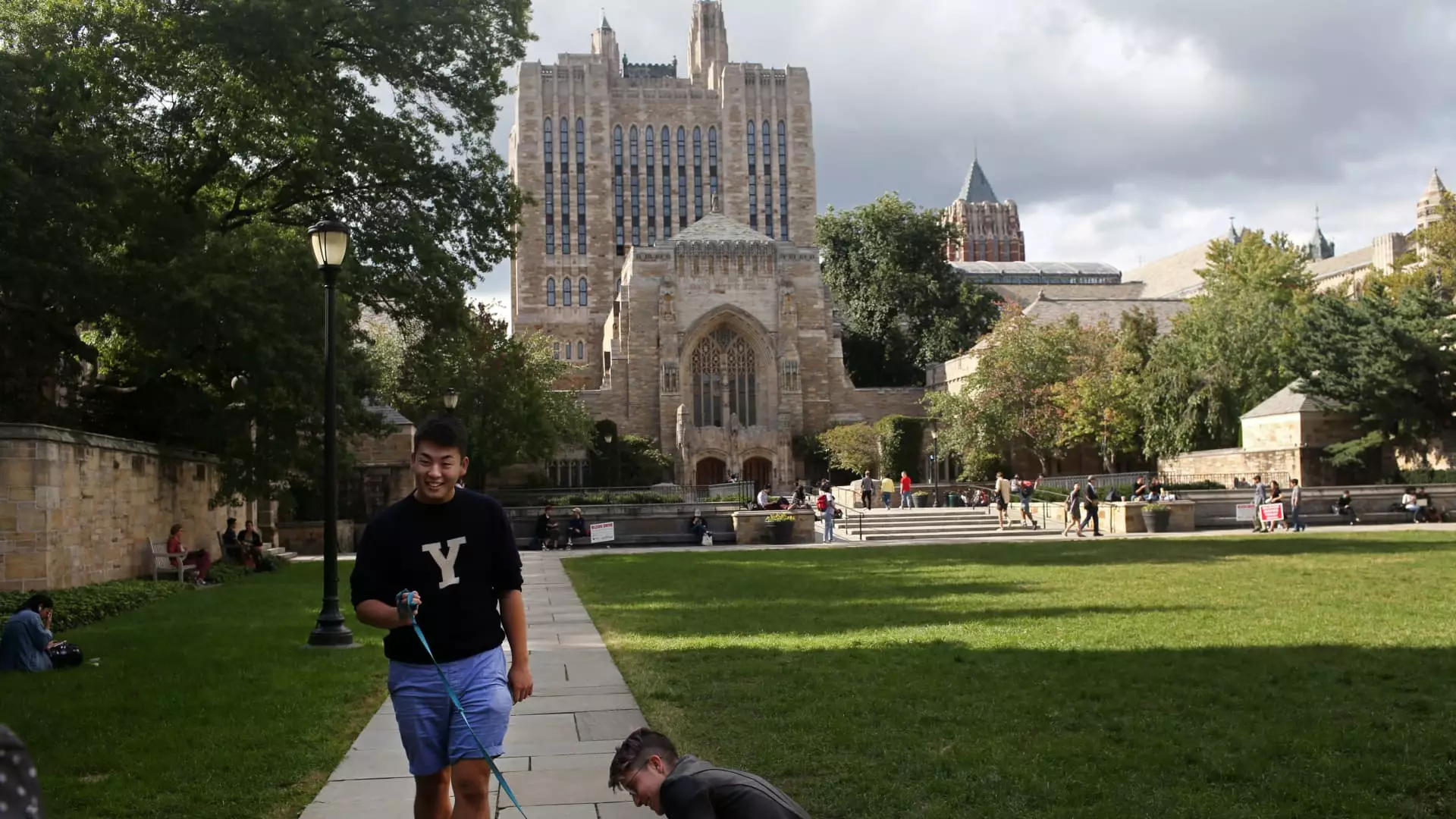The recent legislation signed into law by President Donald Trump, often branded as a “big beautiful” package, claims to bolster the economy through targeted tax adjustments. However, a critical analysis reveals that one of its most contentious elements—an increased tax on university endowments—may do more harm than good. While the government projects a modest $761 million in revenue over a decade, this figure vastly underestimates the potential ripple effects that could destabilize higher education institutions and threaten the fundamental goal of accessible education.
What is notably troubling is the shift from a flat tax rate of 1.4% to a complex, multi-tiered system reaching as high as 8%. This increase predominantly targets large, research-intensive universities with substantial endowments. The assumption seems to be that money stored in university coffers is simply sitting idle, waiting to be taxed. But in reality, these endowments are more than just repositories of wealth—they are vital financial buffers that sustain rigorous research, groundbreaking innovations, and financial aid programs. To treat endowments as unlimited reserves ripe for taxation ignores the essential role they play in fostering the educational and research environment that benefits society at large.
Furthermore, by projecting a narrow fiscal benefit while overlooking the operational realities of these institutions, policymakers risk creating a financial pinch that could worsen the accessibility crisis. Rising taxes, combined with current financial pressures—including cuts to federal and state aid—may force colleges to increase tuition or slash financial aid offerings. Such measures would disproportionately impact low- and middle-income students, contradicting the liberal ideal of expanding educational opportunity. Instead of innovative investments, colleges might find themselves compelled into short-term survival strategies that undermine long-term societal progress.
College Endowments: From Wealth Engines to Political Fodder
Many critics have argued that the notion of taxing university endowments amounts to a political maneuver to stigmatize higher education institutions rather than a genuine effort to improve public finances. The targeted universities, especially prestigious research institutions like Yale, stand to bear the brunt of this policy, with estimates suggesting Yale alone could face a $280 million tax bill in the first year of implementation.
What is troubling is how this proposal conflates wealth with inefficiency. Endowments are designed to buffer economic downturns, provide consistent support for research, and enable financial aid programs that make college accessible to students from diverse backgrounds. By taxing these funds at such high rates, the federal government not only penalizes the institutions for their success but also inadvertently encourages money hoarding rather than philanthropic reinvestment. The unintended consequence is that colleges might divert endowment funds from vital educational initiatives to cover tax liabilities, potentially reducing the quality and availability of financial aid.
This erosion of financial stability is especially concerning given the mounting challenges faced by higher education. A struggling economy, declining federal support, and changing demographics mean that universities are operating in an increasingly precarious environment. Imposing a significant tax burden on their most reliable income source is akin to squeezing a lemon until it stops producing juice. It turns what should be reinvestment in education and research into a source of revenue extraction that compromises the institution’s mission.
Cost-Cutting Measures: Short-Term Fix or Long-Term Disaster?
In anticipation of this tax increase, many universities have already begun implementing cost-cutting measures—hiring freezes, salary delays, and postponed infrastructure projects—highlighting the immediate financial strain. These actions, while necessary in the short term, signal a deeper vulnerability. When institutions are forced to reduce their workforce or abandon critical projects, the quality of education and research diminishes, ultimately impacting students and society at large.
The broader implications are clear: if colleges are compelled into cost-cutting that affects faculty recruitment, research funding, and campus development, the country risks losing its competitive edge in innovation and higher education excellence. Moreover, with some institutions stating that their financial aid budgets could be surpassed by endowment taxes, students from low and middle-income backgrounds will face a shrinking safety net, thwarting the very goal of widening access.
The rise in tuition—already climbing at a rate of approximately 5.6% annually—appears to be an almost inevitable consequence. For generations, higher education has served as a ladder to upward mobility, but this policy threatens to turn it into an insurmountable financial obstacle for many. As costs escalate, the promise of college as a means to better one’s life becomes increasingly fragile, particularly for those less privileged.
Dissecting the Center-Left Perspective: A Call for Smarter, Fairer Policy
While some might argue that taxing endowments is a fair way to ensure that wealthy institutions contribute their fair share, such a perspective fails to recognize the complex role these endowments play within the broader societal fabric. From a center-wing liberal standpoint, it’s vital to approach higher education funding with nuance and fairness. Instead of penalizing institutions that have successfully accumulated endowments through decades of strategic growth and philanthropy, policymakers should advocate for equitable solutions that bolster public funding, expand financial aid, and encourage responsible reinvestment.
The core issue is not the wealth of universities per se but the systemic undervaluation of public investment in higher education. The solution isn’t to arbitrarily tax wealth accumulated over generations but to strengthen state and federal support, ensuring that colleges can maintain quality without passing crushing costs onto students. Higher education should be seen as a public good—an investment in a competent, innovative society—not just a playground for the wealthy or a piggy bank for government coffers.
If one accepts that a more equitable, transparent funding framework is needed, then targeted reforms—such as increased federal grants, incentives for community college expansion, and policies that encourage broader participation—offer real hope. Conversely, punitive taxes on endowments serve only to exacerbate inequalities, discourage institutional innovation, and deepen the crisis of access.
In essence, the debate over taxing university endowments reveals a fundamental disconnect: the misguided belief that universities are sitting on idle riches that should be drained for short-term revenue. Instead, they are vital engines of progress, innovation, and social mobility—fundamentally deserving of support and reinforcement, not punishment.

